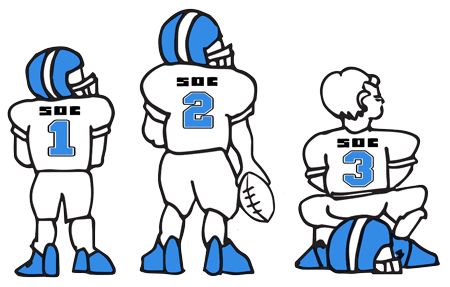ICFiles
SOC 2

Secure File Transfer Soc 2 starts at $1 per month
Capitalizing Versus Expensing Research and Development
Accounting News
September, 2025
Capitalizing Versus Expensing Research and Development
 Based on statistics from the World Bank, the United States government spent 3.59 percent of its 2022 gross domestic product on research and development. While private businesses spend on their own research and development costs, it's important for businesses to treat these expenditures appropriately.
Based on statistics from the World Bank, the United States government spent 3.59 percent of its 2022 gross domestic product on research and development. While private businesses spend on their own research and development costs, it's important for businesses to treat these expenditures appropriately.
When it comes to research and development outlays, U.S. Generally Accepted Accounting Principles (GAAP) dictate that businesses must expense them during the identical fiscal year as they're consumed. Accordingly, this creates difficulties for investors and business owners alike in two ways. The first is more uncertain profitability and loss projections. The second is a murkier ability to quantify their rates of return on assets and investments.
If R&D capitalization is minimal or non-existent by a company, it can imply the business' total assets (or its total invested capital) doesn’t accurately represent how much has been put into such assets. This will affect the business' Return on Assets (ROA) and Return on Invested Capital (ROIC). This illustrates the importance in differences of how businesses treat their R&D expenses – using the balance sheet to capitalize and the income statement to expense.
Accounting Standards
Per International Financial Reporting Standards (IFRS), research outlays are classified as expenses annually, like GAAP. However, development costs may be capitalized for businesses with assets under incubation for saleable purposes (in other words, the tech/IP is expected to be approved and produce revenue in the future).
One consideration with IFRS is that a portion of research and development costs may be capitalized or recorded as an asset on the business' balance sheet, instead of classified as an expense on the Profit and Loss Statement. It's important, though, to understand that judgment is in the eye of the classification as to how commercially viable a product or service will be in the future, potentially causing issues on the company's financial statements. Since research and development is sporadic, it impacts a business' profitability. It's seen in certain sectors, such as consumer discretionary, healthcare, and technology, to highlight a few.
With revenue, cash flow, and profit expected from the long-term investment of research and development, for products or services with a realistic chance, it should be capitalized and not expensed. Investors need to be aware of the differences in how businesses capitalize or expense their research and development spending, since, without additional financial analysis, it's important to factor in research and development equally. This is because companies that don't capitalize experience more unstable earnings.
Exploring Capitalization Versus Expensing
To determine the value and to capitalize such assets, analysts must project the asset's lifespan to produce benefits (over its economic life) and go with that projection for the amortization period.
Amortization life varies between assets and is based on the economic life of the particular asset. Ways to determine the economic life depend on both the asset's patentability and/or salability. If there's a pharmaceutical drug with a 20-year patent, it'll likely have a much longer life than the next mobile device or graphic processing unit (GPU).
Assuming an asset has a life of six years, the business would amortize equally over the six-year time frame. There can be a multitude of amortization approaches, but the straight-line method is used for the capitalized research and development expenses. It assumes the following figures:
$200,000 spent on R&D
$40,000 residual value
Based on the difference of $160,000 and the six-year economic life, each year would result in approximately $26,666 in amortization expense. After six years, the resulting value would be $40,000 in residual value.
Conclusion
Understanding the importance of accounting for R&D outlays is helpful for businesses to maximize investments for competitiveness and financial compliance.
These articles are intended to provide general resources for the tax and accounting needs of small businesses and individuals. Service2Client LLC is the author, but is not engaged in rendering specific legal, accounting, financial or professional advice. Service2Client LLC makes no representation that the recommendations of Service2Client LLC will achieve any result. The NSAD has not reviewed any of the Service2Client LLC content. Readers are encouraged to contact their CPA regarding the topics in these articles.
Dynamic Content Powered by Service2client.com
SEO Content Powered by DynamicPost.net






